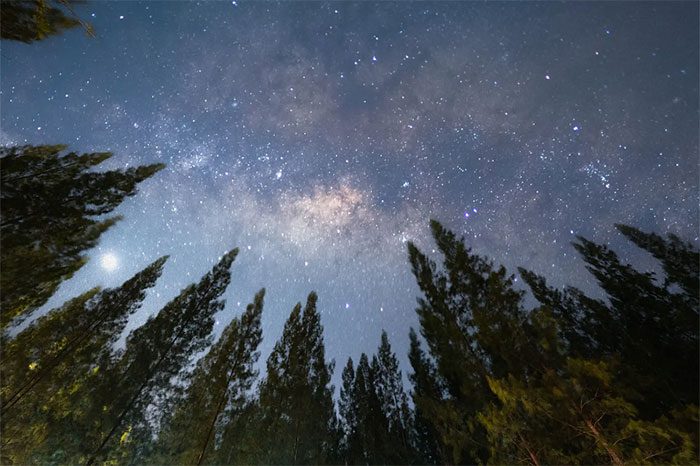Scientists warn that due to light pollution, the ability to see the night sky may be wiped out for humanity within just 20 years.
“The night sky is part of our environment, and it would be a great loss if future generations never get to see it, just as it would be if they never saw a bird’s nest,” said Martin Rees, the Astronomer Royal of the United Kingdom, in an interview with The Guardian.
“You don’t have to be an astronomer to care about this. I’m not an ornithologist, but if I didn’t have singing birds in my garden, I would feel impoverished,” he added.

Scientists warn that humans may not see the stars from Earth in just two decades.
According to Rees, light pollution has rapidly worsened in recent years, including since 2016 when astronomers reported that one-third of humanity could no longer see the Milky Way.
Scientists state that light pollution is currently causing the night sky to brighten at a rate of about 10% each year.
A child born in an area where 250 stars can be seen at night today will only be able to see about 100 stars by the time they turn 18, revealed Christopher Kyba from the German Geoscience Center.
While light pollution has been a longstanding issue for over half a century, the latest surge in this problem may stem from the increasing use of light-emitting diodes (LEDs) and other forms of high-intensity nighttime lighting.
In addition to the aesthetic loss of our stars, light pollution poses several other ecological risks.
In 2019, scientists discovered that this issue contributes to the “insect apocalypse.” Light significantly impacts how insect species move, forage, reproduce, develop, and hide from predators.
Light pollution causes sea turtles and migratory birds to become confused by moonlight guidance.
Rees and his colleagues are advocating for their 2020 report, proposing several policies to mitigate light pollution. These include appointing a minister responsible for dark skies, creating a dark skies committee, and establishing strict standards for lighting density and direction.


















































